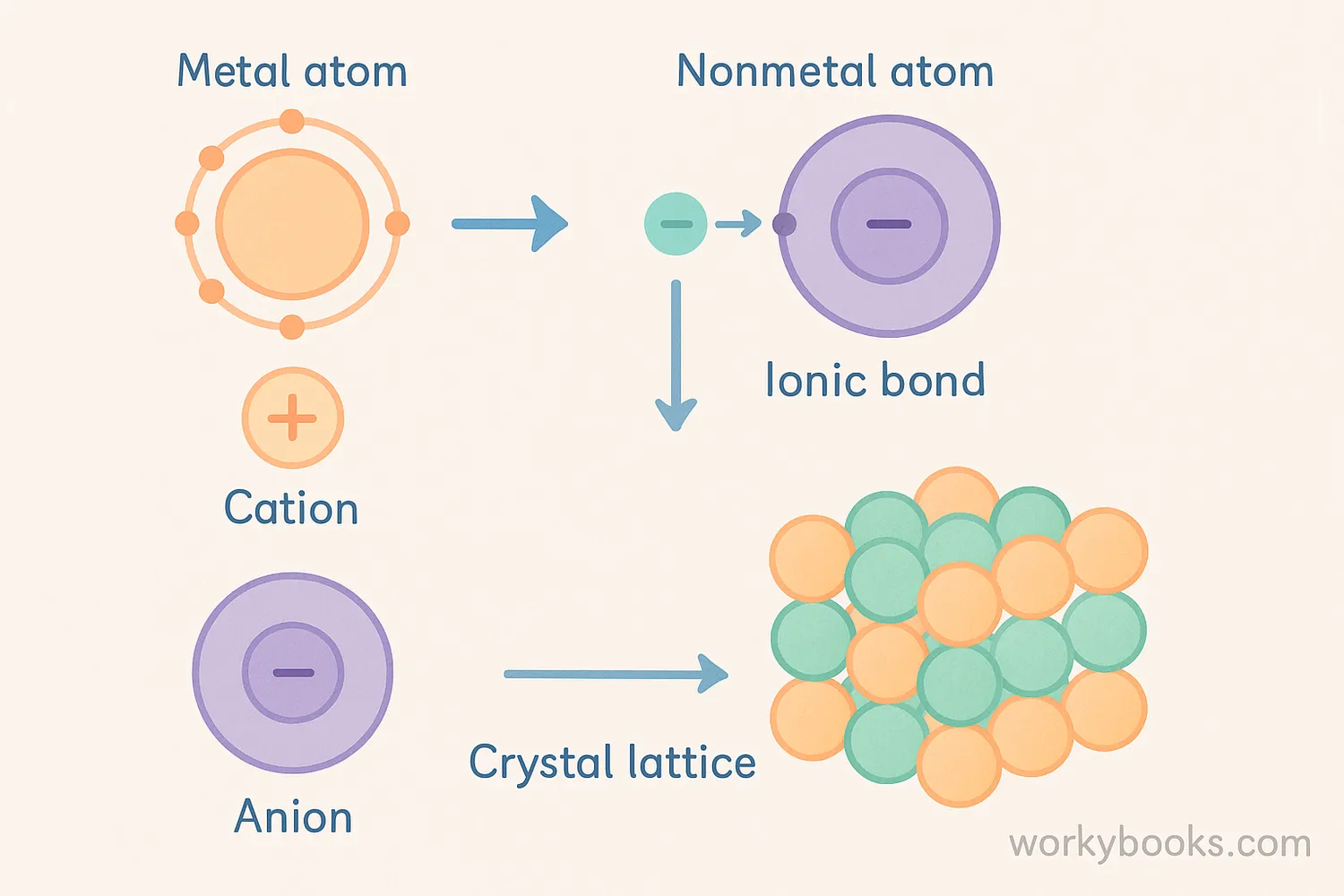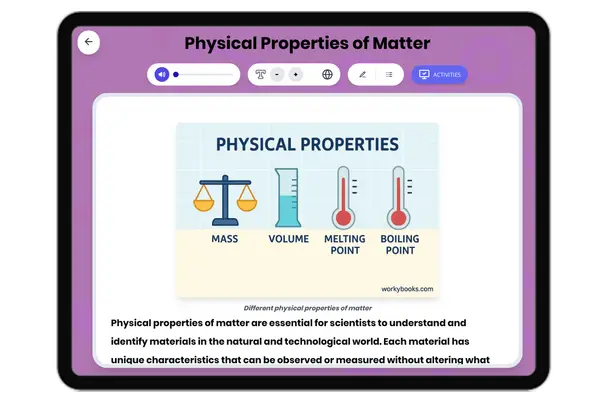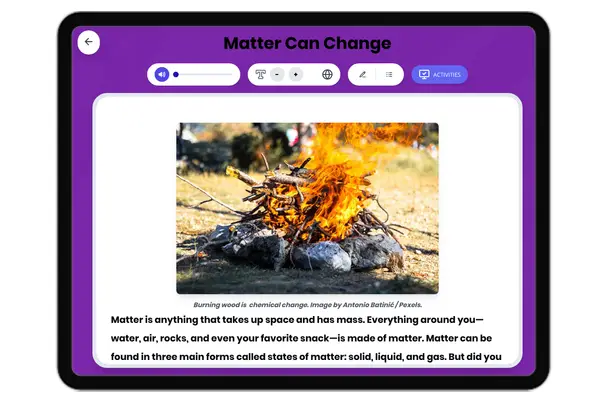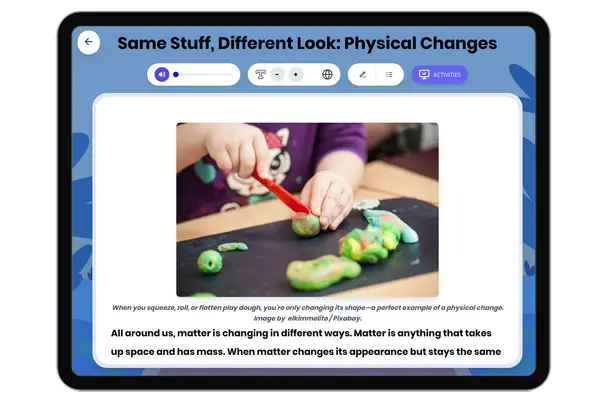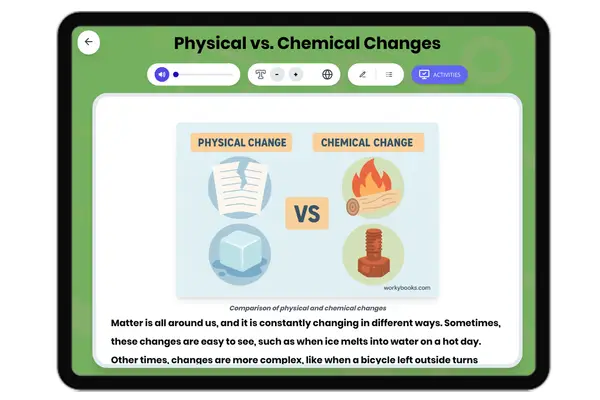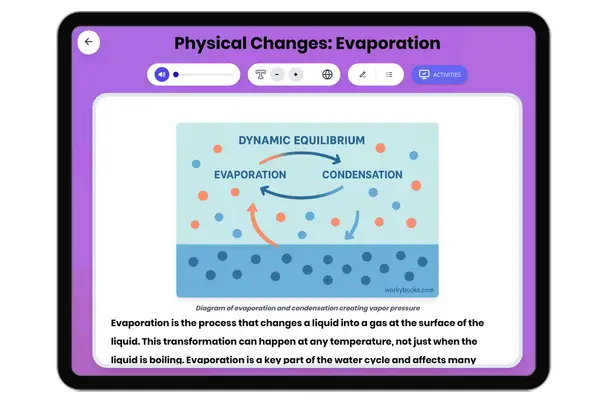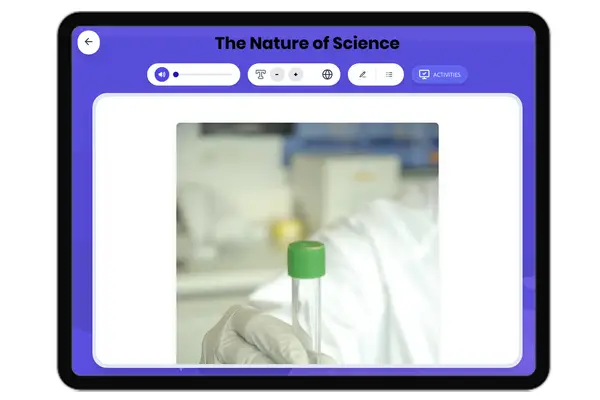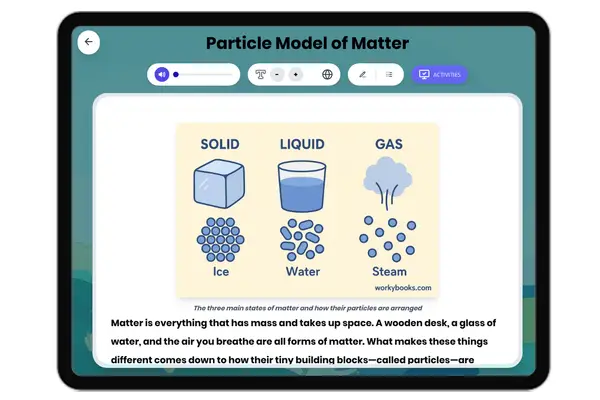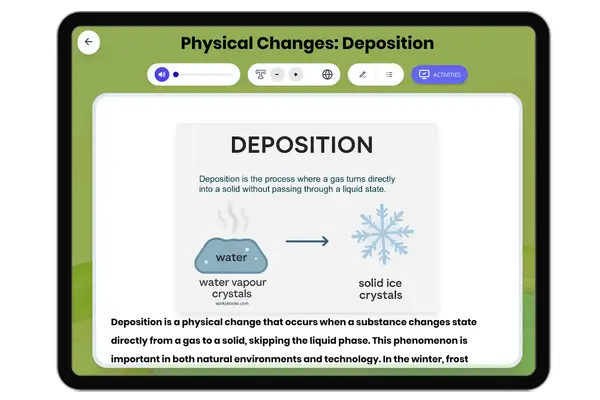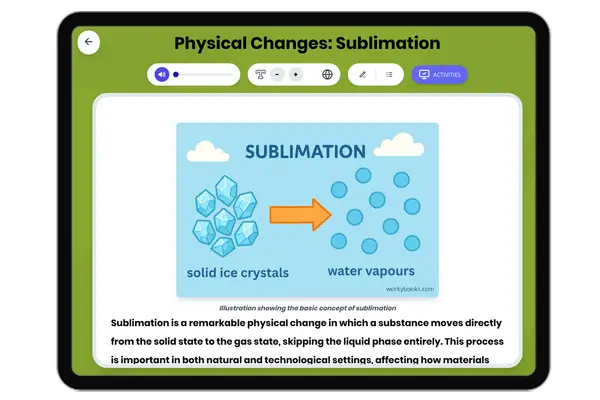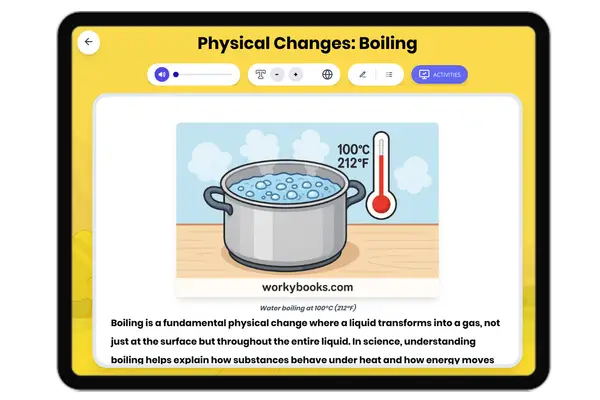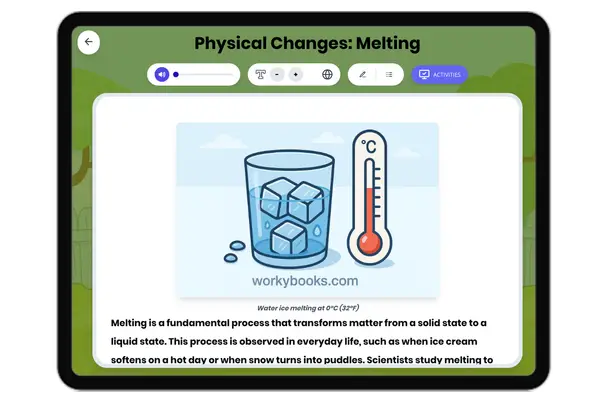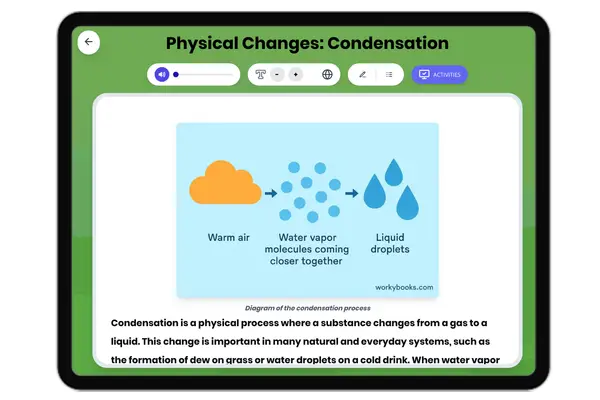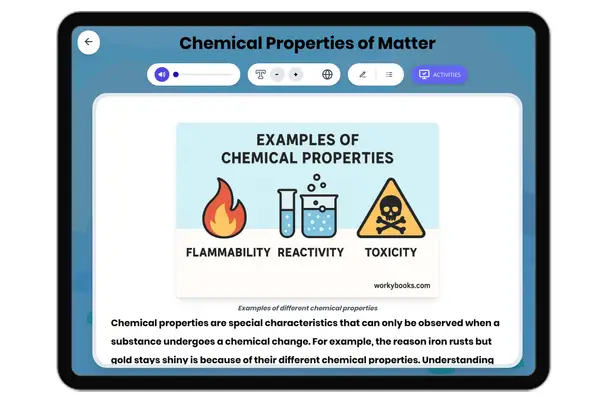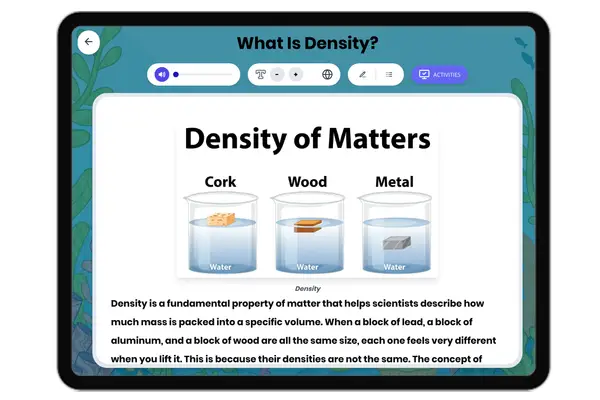How to name ionic compounds — Reading Comprehension
Premium Resource
Grades
- 3
- 4
- 5
- 6
- 7
- 8
PRINT+DIGITAL RESOURCE
This learning resource is available in interactive and printable formats. The interactive worksheet can be played online and assigned to students. The Printable PDF version can be downloaded and printed for completion by hand.
About This Reader
"This science passage, aligned with NGSS standards, provides a comprehensive explanation of how to name ionic compounds. It covers the fundamental concepts of ions, cations, and anions, detailing the systematic rules for naming these chemical substances. The passage uses clear, accessible language suitable for middle school students (grades 6-8), offering relatable examples and highlighting the real-world relevance of chemical nomenclature. It's designed to build foundational knowledge in chemistry, making complex concepts understandable and engaging for young learners."
Perfect For:
👩🏫 Teachers
- • Reading comprehension practice
- • Auto-graded assessments
- • Literacy skill development
👨👩👧👦 Parents
- • Reading practice at home
- • Comprehension improvement
- • Educational reading time
🏠 Homeschoolers
- • Reading curriculum support
- • Independent reading practice
- • Progress monitoring
Reading Features:
📖
Reading Passage
Engaging fiction or nonfiction text
❓
Comprehension Quiz
Auto-graded questions
📊
Instant Feedback
Immediate results and scoring
📄
Printable Version
Download for offline reading
🔊
Read Aloud
Voice-over with word highlighting



